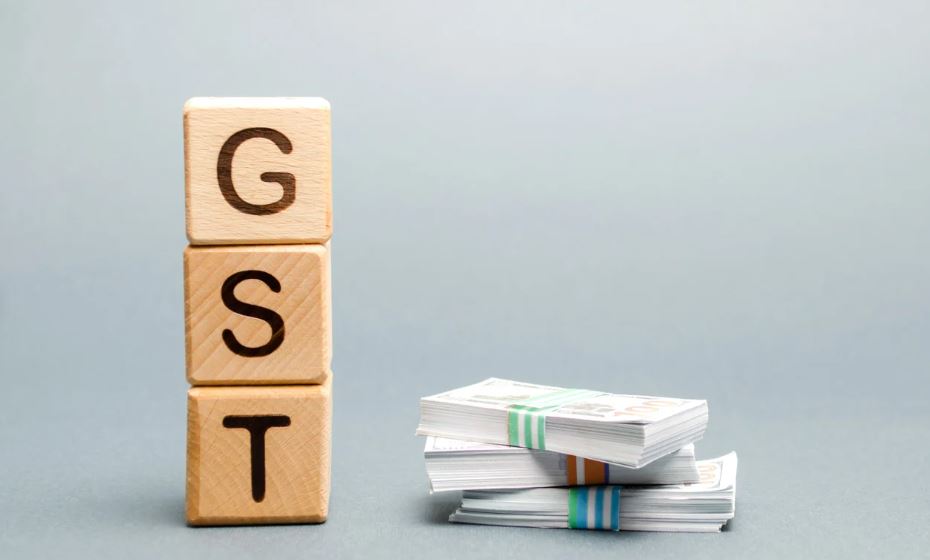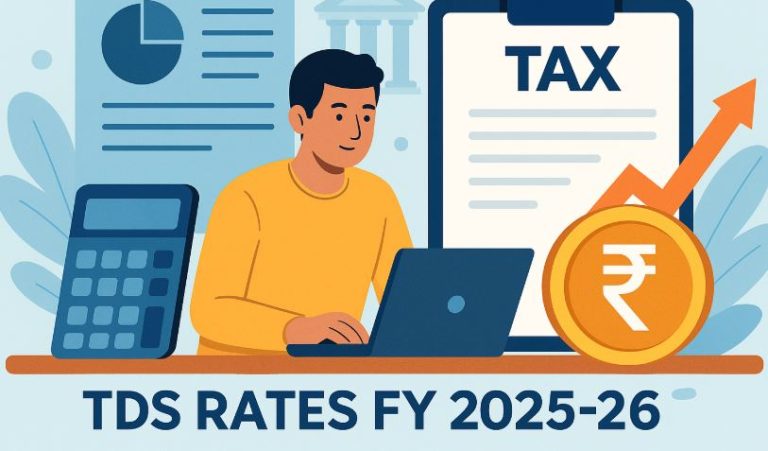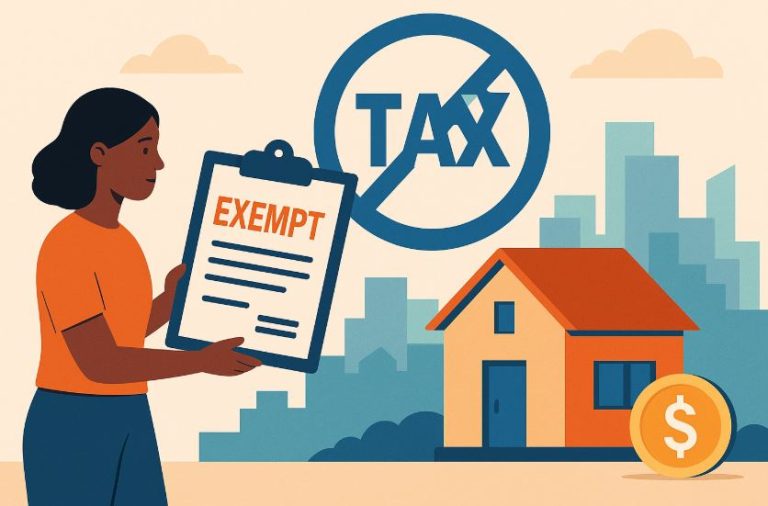In a landmark move, the Government of India, through the 56th GST Council Meeting, introduced a comprehensive update to the Goods and Services Tax (GST) regime.
With a focus on simplification, inclusivity, and growth, the new GST rates list for 2025 is a massive stride towards a more streamlined and citizen-friendly tax system.
The decisions from this council meeting aren’t merely administrative changes; they signal a broader shift in India’s tax policy, one that prioritises affordability, business ease, and sectoral rationalisation.
Let’s examine what has changed, why it matters, and how these shifts will impact businesses and everyday life across India.
What Are the Major Announcements From the 56th GST Council Meeting?
The 56th GST Council meeting held in New Delhi under the chairpersonship of Union Finance Minister Nirmala Sitharaman resulted in several key reforms:
- Introduction of a two-tier GST structure, replacing the four-tier system
- Complete exemption on GST for insurance policies, both health and life
- Reduction in GST on over 150+ items, ranging from food products to auto components
- Establishment of GST Appellate Tribunal (GSTAT) to address pending and new appeals
- Correction of inverted duty structures in multiple sectors like textiles and fertilizers
- Phased implementation of the new GST rates from 22nd September 2025
These reforms have been designed with a multi-sectoral focus, impacting everything from agriculture to healthcare and automobile manufacturing to consumer goods.
The overall goal, as highlighted by the government, is to make the system more transparent, predictable, and equitable.
How Is the Revised GST Rate Structure Simplified for Citizens?

The previous four-slab GST structure (5%, 12%, 18%, and 28%) has been a source of confusion and litigation for businesses, particularly small and medium enterprises. The new GST rate structure for 2025 has been rationalised into:
- Merit Rate – 5%: Applied to essential and life-enhancing goods and services
- Standard Rate – 18%: Applied to general goods and services not otherwise classified
- Demerit Rate – 40%: Applied to luxury goods and sin products like tobacco, pan masala, and high-sugar beverages
By removing the intermediate slabs (12% and 28%), the government aims to reduce classification disputes, eliminate inverted duty structures, and simplify GST compliance.
For businesses, the simplification means fewer compliance burdens, more predictable pricing structures, and improved cash flow due to fewer input credit mismatches. For consumers, the end result is clearer pricing and, in many cases, lower prices on everyday products.
Which Essential Daily-Use Items Are Now Cheaper?
One of the standout features of the new GST rates list 2025 is the focus on reducing taxes on essential household products. These are goods that impact the daily lives of millions of Indians, from hygiene products to basic kitchen essentials.
The GST Council approved a reduction in rates on the following items:
- Personal care products such as hair oil, toilet soaps, shampoos, toothbrushes, and toothpaste are now taxed at 5%, down from 18%.
- Basic household items, including candles, matchboxes, kitchenware, and tableware, have moved to the 5% bracket.
- Packaged dairy products, such as UHT milk, condensed milk, and pre-packaged paneer and cheese, have been either brought down to 5% or made completely GST-free.
- Indian breads such as chapati, roti, paratha, and parotta are now fully exempt from GST.
The logic behind these cuts lies in affordability. Making these products cheaper directly benefits low and middle-income households, especially those in rural and semi-urban areas.
What Is the GST Impact on the Food and Beverage Industry?
The food and beverage industry is perhaps one of the most widely consumed sectors affected by this revision. The GST Council has made sweeping changes in this category to encourage consumption and support domestic manufacturers.
Key GST changes in the food sector include:
- Packaged foods such as namkeens, bhujia, pasta, noodles, and sauces now attract just 5% GST, down from 12% or 18%.
- Beverages, including packaged tea and coffee, have seen reductions to 5%, encouraging mass-market affordability.
- Chocolates and cocoa products have been brought down from 18% to 5%, making indulgences more accessible.
- Instant food mixes and preserved food items also benefit from a uniform 5% rate.
By bringing most food and beverage products under a lower tax bracket, the government is targeting inflation control, especially in urban centres where such products form a staple part of consumption patterns.
How Are Healthcare and Life-Saving Medicines Affected?

In a significant pro-public health decision, the government has rolled out broad-based GST exemptions and reductions on healthcare-related products and services.
- GST has been completely removed on 33 critical life-saving drugs, many of which are used for cancer treatment, rare diseases, and organ transplants.
- Additional 3 drugs previously taxed at 5% have now been exempted entirely.
- All other medicines and drugs, including common treatments and over-the-counter medication, are now taxed at just 5%.
- Medical equipment, including devices for dental, surgical, diagnostic, and physical therapy use,are now under the 5% GST bracket.
- Health insurance policies, including family floater plans and senior citizen policies, are now fully GST exempt.
- Life insurance policies, including ULIPs, term life, and endowment policies, are also exempt from GST.
These reforms aim to make healthcare more accessible and reduce the overall financial burden on patients and families.
New GST Rates List 2025
| Category | Items Covered | Old Rate | New Rate (2025) |
|---|---|---|---|
| Essential Daily-Use Items | Soaps, toothpaste, toothbrush, hair oil, shampoo | 18% | 5% |
| Indian breads (roti, paratha, parotta) | 5% | 0% (Exempt) | |
| UHT milk, paneer, packaged curd | 5%–12% | 0%–5% | |
| Food & Beverages | Chocolates, sauces, noodles, ready-to-eat food, instant mixes | 12%–18% | 5% |
| Coffee, tea (pre-packaged), fruit juices | 12% | 5% | |
| Namkeens, chips, cornflakes | 12% | 5% | |
| Healthcare & Medicines | Life-saving drugs (for cancer, rare diseases) | 5%–12% | 0% (Exempt) |
| Diagnostic kits, glucometers, bandages, medical tools | 12%–18% | 5% | |
| All life and health insurance policies | 18% | 0% (Exempt) | |
| Agricultural Inputs & Equipment | Tractors, irrigation pumps, threshers, compost machines | 12% | 5% |
| Organic fertilisers, seeds, animal feed | 5% | 0% | |
| Automobile Sector | Two-wheelers (≤350cc), small cars, three-wheelers | 28% | 18% |
| Ambulances, public transport buses and trucks | 28% | 18% | |
| Auto components (general) | Varied | Uniform 18% | |
| Energy & Environment | Solar panels, wind turbines, biogas units | 12% | 5% |
| Construction Materials | Cement, steel bars | 28% | 18% |
| Textiles & Apparel | Man-made yarns, synthetic fibres | 12%–18% | 5% |
| Hospitality | Hotel rooms (below ₹7,500/day) | 12% | 5% |
| Luxury & Sin Goods | Tobacco, pan masala, gutkha, aerated drinks | 28% + cess | 40% (Demerit rate) |
- The merit rate of 5% applies to essential goods and services.
- The standard rate remains 18% for most goods/services not falling under special categories.
- The new demerit rate of 40% targets harmful or luxury items.
- GST exemptions apply where specified, especially in healthcare and food sectors.
What Are the GST Reforms for Agriculture and Labour-Intensive Sectors?
To promote rural employment and boost India’s agricultural backbone, the GST Council reduced tax burdens across various farming and manual sectors.
For Agriculture
- Equipment like tractors, soil preparation tools, threshing machinery, and irrigation pumps have seen GST reductions from 12% to 5%.
- Composting machines and other environmental tools used in farming have also been brought under the 5% slab.
- Seeds, animal feed, and related agricultural inputs are either zero-rated or placed at the merit rate.
For Labour-intensive Industries
- GST rates on handicrafts, marble blocks, granite, and intermediate leather goods have been reduced to 5%.
- Renewable energy devices such as solar panels, biogas units, and wind turbines are now more affordable.
- Hotel accommodations below ₹7,500/day are now taxed at a concessional 5%.
These cuts aim to improve domestic manufacturing, promote exports, and support traditional craftspeople and MSMEs across India.
How Has GST Changed for the Automobile and Transport Sector?

The automobile sector, a key economic driver, has long been taxed heavily. The new GST reforms of 2025 have addressed many longstanding issues in this area:
- Two-wheelers and small cars, previously taxed at 28%, are now brought under the 18% standard rate.
- Three-wheelers and electric vehicles also benefit from this shift, making personal mobility more affordable.
- Auto components, previously taxed variably, now have a uniform GST rate of 18%, eliminating confusion.
- Ambulances, transport buses, and trucks have also seen rates reduced to 18%.
These steps are aligned with India’s push toward electric mobility and public transportation efficiency.
When Will the New GST Rates Be Implemented?
The GST Council announced a phased implementation strategy for the revised rates to avoid market disruption and ensure readiness:
- Effective Date for Most Goods and Services: 22nd September 2025
- Sin Goods (Tobacco, Pan Masala, etc.): Existing rates continue until all liabilities under the Compensation Cess are cleared
- CBIC (Central Board of Indirect Taxes and Customs) has started administrative implementation, including provisional refunds based on analytics.
Businesses are advised to update their billing software and pricing systems to reflect the new rates before the implementation deadline.
What Institutional Changes Were Proposed for GST Appeal Systems?
The Council has taken significant steps to strengthen the dispute resolution mechanism under GST by setting up the Goods and Services Tax Appellate Tribunal (GSTAT).
Key Features
- Will begin accepting appeals from September 2025
- Expected to start hearings by December 2025
- Will serve as the National Authority for Advance Rulings, promoting consistency
- Backlog appeals must be filed before 30th June 2026
- GSTAT will also deal with appeals related to input tax credit, classification issues, and procedural lapses
These changes are aimed at reducing litigation timelines and bringing relief to businesses facing tax-related disputes.
How Will These GST Changes Affect Businesses and Consumers?

The 2025 reforms are among the most comprehensive updates to GST since its inception. Their GST impact is expected to be wide-ranging and long-lasting.
For Businesses
- Improved compliance: Fewer slabs, better classification, less litigation
- Lower input costs: Due to reduced GST on raw materials and intermediaries
- Simpler accounting: Uniform rates and fewer exemptions to track
- Faster refunds: Through improved analytics and CBIC-led risk assessments
For Consumers
- Lower retail prices: On everyday goods, food items, and medicines
- Better access to insurance and healthcare: Due to GST exemptions
- More clarity on pricing: With a simplified rate structure
The intent behind these reforms is to drive consumption, ease business operations, and improve living standards, making GST truly “Good and Simple Tax.”
Conclusion
The new GST rates list 2025 marks a pivotal shift toward a simplified, citizen-centric tax regime. By lowering rates on essential goods and services and correcting duty imbalances, the GST Council aims to ease the cost of living and promote business growth.
These reforms will have far-reaching impacts across sectors, from healthcare and agriculture to transport and retail. As implementation begins, businesses and consumers alike must stay informed and adapt to the new tax landscape efficiently.
Frequently Asked Questions (FAQs)
Is GST completely removed from any product categories in 2025?
Yes, products like UHT milk, Indian breads, and several life-saving medicines are now GST-exempt (0%).
When do the new GST rates come into effect?
The new GST rates will be applicable from 22nd September 2025, except for demerit goods like tobacco.
Are all insurance policies now GST-free?
Yes. All individual health and life insurance policies are now GST exempt under the 2025 reforms.
What is the demerit GST rate?
The demerit rate is 40% GST, applied to luxury and harmful goods like cigarettes, pan masala, and sugary beverages.
How has the GST rate changed for automobiles?
Most two-wheelers, small cars, and public transport vehicles are now taxed at 18%, down from 28%.
Are renewable energy products cheaper now?
Yes, solar panels, biogas units, and wind turbines are now taxed at 5%, supporting India’s clean energy goals.
Disclaimer:
The information provided in this article is based on official announcements, press releases, and government notifications available at the time of writing. While every effort has been made to ensure accuracy, readers are advised to refer to the official GST portal for the most updated and detailed information.
For the complete and official GST rates list, please visit: CBIC GST Rate Portal – https://cbic-gst.gov.in




